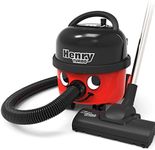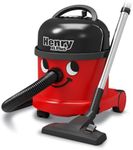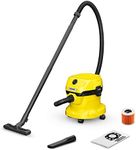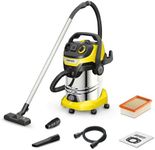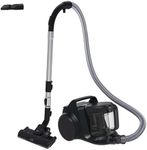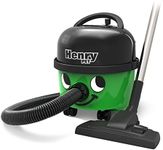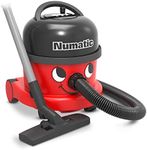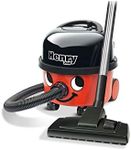Buying Guide for the Best Construction Vacuums
When choosing a construction vacuum, it's important to consider the specific needs of your projects and the types of debris you'll be dealing with. Construction vacuums are designed to handle heavier and more varied debris than regular household vacuums, so understanding the key specifications will help you select a model that can efficiently and effectively clean your worksite. Consider the size of the area you'll be cleaning, the types of materials you'll be vacuuming, and any specific features that might make your job easier.Suction PowerSuction power is a measure of how effectively a vacuum can pick up debris. It's usually indicated in air watts or CFM (cubic feet per minute). Higher suction power means the vacuum can handle heavier and larger debris, which is crucial on construction sites where materials like sawdust, nails, and small pieces of wood are common. For light-duty tasks, a lower suction power might suffice, but for heavy-duty cleaning, look for a vacuum with higher suction power to ensure it can handle the workload.
CapacityThe capacity of a construction vacuum refers to the size of its dustbin or bag, indicating how much debris it can hold before needing to be emptied. Larger capacities are beneficial for extensive projects or larger sites, as they reduce the frequency of emptying the vacuum. If you're working on smaller projects or in tighter spaces, a vacuum with a smaller capacity might be more manageable and easier to maneuver. Consider the scale of your projects to determine the right capacity for your needs.
Filtration SystemThe filtration system in a construction vacuum is crucial for trapping fine dust and preventing it from being released back into the air. HEPA filters are highly effective and are recommended if you're dealing with very fine dust or allergens. For general construction debris, a standard filter might be sufficient. If air quality is a concern, or if you're working in enclosed spaces, opt for a vacuum with a high-quality filtration system to ensure a cleaner and safer environment.
DurabilityDurability refers to the vacuum's ability to withstand the tough conditions of a construction site. This includes the materials used in its construction, such as a robust housing and sturdy wheels. A durable vacuum will last longer and perform better under the stress of heavy use. If your work involves frequent or intensive cleaning, investing in a more durable model will save you time and money in the long run. Consider the environment and frequency of use when assessing durability.
PortabilityPortability is about how easy it is to move the vacuum around the construction site. This includes the weight of the vacuum, the presence of wheels, and the length of the power cord. A more portable vacuum is beneficial for larger sites or when you need to move between different areas frequently. If your work is confined to a single area, portability might be less of a concern. Evaluate the layout of your worksite and how often you'll need to move the vacuum to determine the importance of portability.
Wet/Dry CapabilityWet/dry capability allows a vacuum to handle both liquid spills and dry debris, making it versatile for various construction site conditions. This feature is particularly useful if you're working in environments where water or other liquids might be present. If your projects involve both wet and dry cleaning tasks, a vacuum with this capability will be more efficient and convenient. Consider the types of messes you typically encounter to decide if this feature is necessary for your work.
